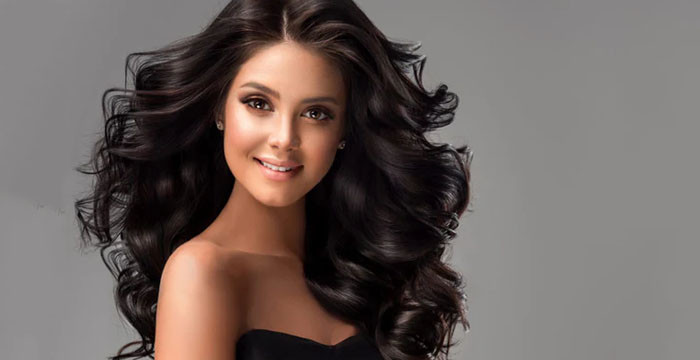Genetics, lifestyle, and hair care routine can affect your ability to achieve thick, long, and beautiful hair. Your hair grows in cycles, with each strand going through three phases: anagen (growth), catagen (transition), and telogen (resting). Average hair grows approximately half an inch every month, but stress, a weak diet, regulation of hormones, and poor hair care can slow this process. For strong, healthy hair, a combination of a good diet, scalp health, and protective styling methods is necessary to ensure hair growth and quality.
The Role of Nutrition in Hair Health
Like the rest of the body, hair requires constant nutrients to grow strong and healthy. A vitamin and mineral-rich diet maintains thickness and prevents over-shedding. Biotin, also known as the “hair growth vitamin,” promotes keratin production, strengthening your hair and helping it avoid breakage. Iron deficiency is also a prevalent reason for thinning hair, so iron-rich foods such as spinach, red meat, and lentils are essential. Omega-3 fatty acids in fish, flaxseeds, and walnuts provide moisture to the scalp and ensure healthy hair follicles. Since hair comprises keratin, a protein form, a diet rich in proteins like eggs, chicken, and dairy is equally crucial for growth. Vitamin D deficiency is also associated with hair loss, so getting sun and eating fortified foods can help keep levels optimal.
Scalp Care for Healthy Hair Growth
A well-balanced scalp is essential for beautiful hair. The buildup of excess oil, dandruff, or product can clog the scalp, weaken hair follicles, and slow growth, creating thinning hair. Rinse hair, then clean with a gentle shampoo to clear buildup and keep a balanced scalp ecosystem. Gentle scalp massaging enhances blood circulation, promoting nutrient distribution to the hair follicles. Like the skin, the scalp benefits from occasional exfoliation to help eliminate dead skin and clear clogged pores. The scalp also shows its condition in the hair strands themselves, and keeping it well nourished with oils like argan or coconut oil prevents it from becoming dry and flaky.
Protective Hairstyles and Their Benefits

Regular exposure to heat styling, harsh weather, and chemical treatments can lead to split end breakage and weakened hair strands. Preventing damage and retaining length using protective hairstyles. Braids and twists tuck hair away to create less friction and breakage. Securing hair in a loose bun helps avoid tangles and split ends. Wigs and extensions can serve a protective function when worn correctly and let natural hair grow uninhibited. Tape in extensions are one of the go-to solutions for quickly adding volume and length. When applied correctly, these extensions integrate smoothly with your natural hair and give a heavier look without leaving too much damage. With the proper care, they may live for weeks and are lightweight and easy to maintain.
Natural Remedies for Thicker Hair
Many people seek hair growth and thickness on natural ingredients. One of the best treatments is castor oil, which contains a high dose of ricinoleic acid and promotes hair growth. It contains enzymes that fight dead skin cells on the scalp, which helps in better and healthier follicles. Onion juice has a high sulphur content and has been shown to aid hair regrowth and thinning. Rice water is rich in amino acids and vitamins that strengthen your hair and add shine. Over time, these remedies become essential to the hair care routine, resulting in visible benefits.
Styling Techniques to Create the Illusion of Fuller Hair
If you want results now, styling techniques can make your hair look thicker. Layered haircuts also create movement and volume, giving the eyes an illusion of thicker hair. Root lifting products—mousses, volumising sprays, and dry shampoos—add root lift for a fuller appearance. Blow-drying hair upside down immediately lifts the roots and adds body. Lightweight styling products help prevent hair from appearing greasy and flat. An excellent way to add volume would be to use tape in extensions. Unlike clip-ins, these extensions sit flat against the scalp, meaning they are practically undetectable. They make the hair appear thicker instantly while enabling natural hair growth without causing too much strain.
The Psychological Impact of Beautiful Hair
Hair is more than a physical attribute; it is an integral part of self-worth and confidence. Most people consider long, rich, widespread, healthy hair signs of beauty, youth, and vitality. When hair looks beautiful and healthy, it tends to wear well and makes you feel good about yourself. Nourishing hair is not about beauty but self-care and a path to body well-being. Taking care of hair, whether by regular trims, deep conditioning treatments, or just allowing the hair to air dry, gaining a healthy mane, in turn, leads to a good self-perception.
Conclusion
Getting thicker, longer, beautiful hair is a matter of eating well, scalp care, protective styling, and having the right products. Genetics is a factor, yet sticking to a healthy hair care routine can make a difference over time. Of course, whether natural, strategic styling, or professional treatment, obtaining long, lustrous locks will take some patience and dedication. Beautiful hair is a good investment of time and effort because it makes you look and feel good simultaneously!

